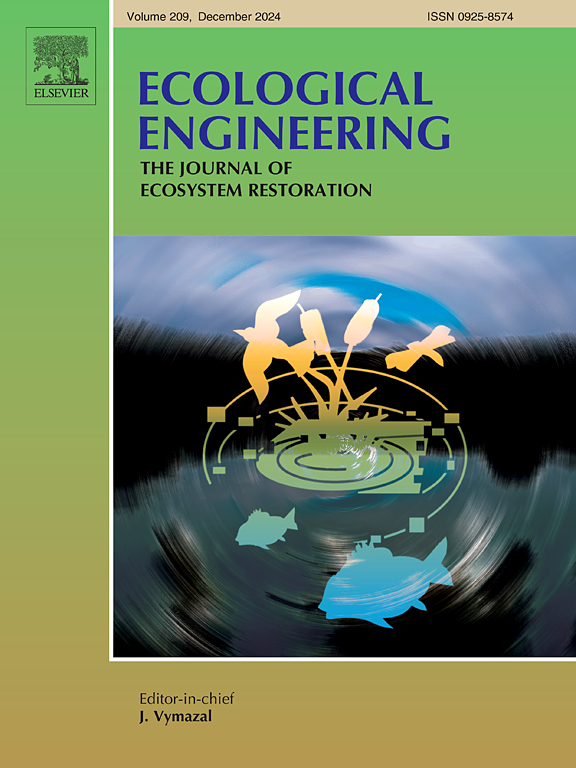Efficiency of planted and unplanted vertical flow aerated filters in treatment of young landfill leachate
IF 3.9
2区 环境科学与生态学
Q1 ECOLOGY
引用次数: 0
Abstract
Young landfill leachate, produced by the passage of water through operating sites at a municipal landfill, is highly concentrated in organic matter, ammonia and metals, and is typically treated using intensive, conventional systems. Studies have demonstrated efficient treatment of low-strength old leachate, produced by capped sites at a landfill, by nature-based systems such as treatment wetlands. Few studies have investigated the use of similar systems to treat young leachate. The objectives of this study were to 1) determine if vertical flow planted and unplanted aerated filters could efficiently treat young leachate COD, BOD5, TSS, NH4 and p-cresol; 2) determine the suitability and effect of two plant species on treatment efficiency; 3) quantify the denitrification capacity achieved in pre-anoxic filters; and 4) determine full-scale design criteria (hydraulic and organic loading rates and space requirements) for 1500 m3/d of young leachate. Five 430 L water-saturated vertical flow pilot-scale filters with forced aeration and 10 to 20 mm granite gravel media were operated in parallel in a greenhouse for 42 weeks total during fall 2020 and spring through fall 2021. Each filter was fed with an average of 16.4 L m−2 d−1 of anaerobically pretreated young leachate spiked with 3340 μg/L of p-cresol for an organic loading rate of 3.5 g BOD5 m−3 d−1 to each filter. Two filters were planted with Salix miyabeana ‘SX67’, two were planted with Sporobolus michauxianus and one was left unplanted. Two planted filters (one with each plant species) had pre-anoxic filters for denitrification. Results indicated that planted and unplanted filters offered similar treatment, with average removal efficiencies of 74 % for COD, 98 % for BOD5, 96 % for TSS, 100 % for NH4 and 100 % for p-cresol. Young leachate treatment negatively impacted plant health and their chlorophyll fluorescence. Systems with pre-anoxic filters were able to achieve a higher total nitrogen removal efficiency of 70 % compared to 60 % on average for systems without pre-anoxic filters. The high removal efficiency achieved suggests that filter systems were operated below the treatment capacity of the microorganisms. Unplanted aerated filters are a promising technology for treatment of young landfill leachate and p-cresol.

求助全文
约1分钟内获得全文
求助全文
来源期刊

Ecological Engineering
环境科学-工程:环境
CiteScore
8.00
自引率
5.30%
发文量
293
审稿时长
57 days
期刊介绍:
Ecological engineering has been defined as the design of ecosystems for the mutual benefit of humans and nature. The journal is meant for ecologists who, because of their research interests or occupation, are involved in designing, monitoring, or restoring ecosystems, and can serve as a bridge between ecologists and engineers.
Specific topics covered in the journal include: habitat reconstruction; ecotechnology; synthetic ecology; bioengineering; restoration ecology; ecology conservation; ecosystem rehabilitation; stream and river restoration; reclamation ecology; non-renewable resource conservation. Descriptions of specific applications of ecological engineering are acceptable only when situated within context of adding novelty to current research and emphasizing ecosystem restoration. We do not accept purely descriptive reports on ecosystem structures (such as vegetation surveys), purely physical assessment of materials that can be used for ecological restoration, small-model studies carried out in the laboratory or greenhouse with artificial (waste)water or crop studies, or case studies on conventional wastewater treatment and eutrophication that do not offer an ecosystem restoration approach within the paper.
 求助内容:
求助内容: 应助结果提醒方式:
应助结果提醒方式:


